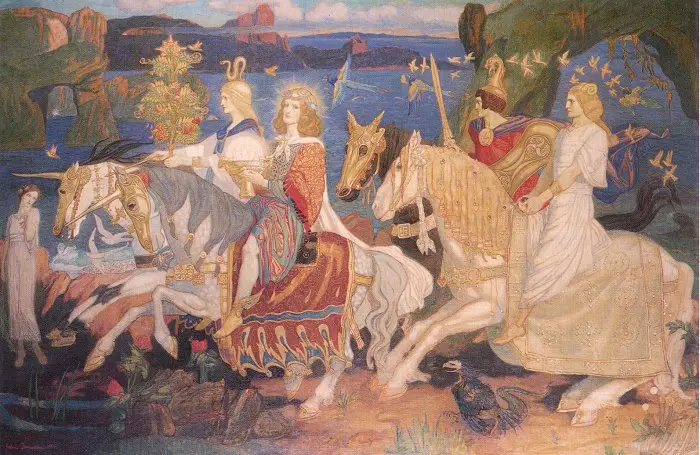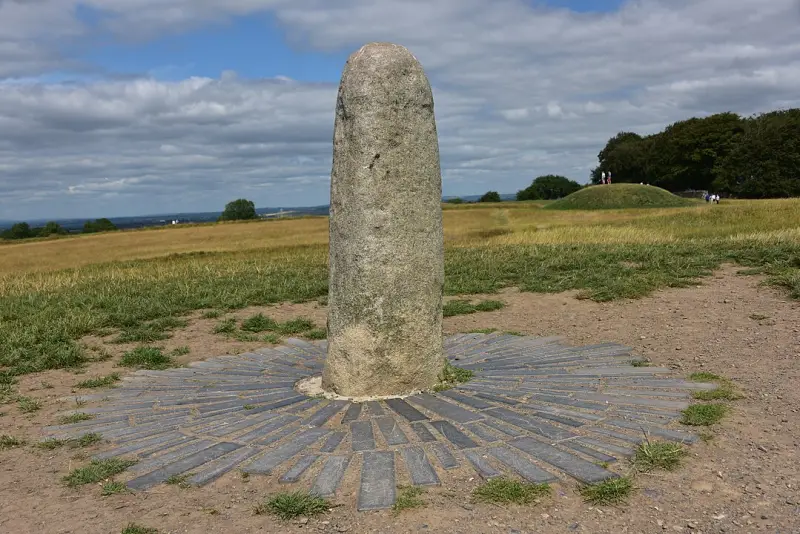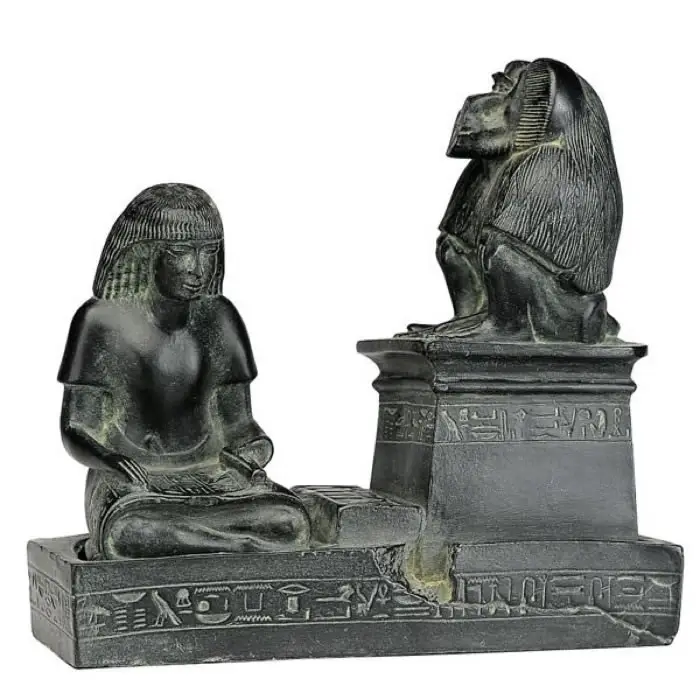Ancient Egyptians in Ireland

"Riders of the Seeds." John Duncan, Scottish artist of the 19th century. This is roughly how the tribes of the goddess Danu are represented in Scotland and Ireland
The Hill of Tara is a sacred Irish site. It is surrounded by Neolithic buildings and tombs. True, Tara is associated with the Celts, but it predates their arrival on the island by thousands of years. And here, according to myths, the Tuatha De Danann ruled - god-like people, or the ancestors of the Irish who had a magical gift. Perhaps they became the prototype of the elves.
Burial places
During excavations near Tara, workers found a skeleton. Some thought it referred to a dog, others thought it referred to a badger. But the most interesting of all was the statement that said that these were the remains of a monkey.

Stone of Destiny on the Hill of Tara
But how did the monkey skeleton end up here?
These primates are not indigenous to Ireland, but the archaeological site is several thousand years old. If monkey bones were found here, could something similar be found at any other sacred Irish site?
Yes. During excavations in County Armagh, the skull of a Barbary ape was found. Radiocarbon dating revealed it to be about 2 years old. Archaeologists wondered how he got here in the first place. Although, perhaps, it would be more interesting to know why the skull is there.
Ancient Egypt
The connection to Ancient Egypt is an interesting and controversial theory. Although there are many legends in Ireland that connect Tara and the Egyptian pharaohs, they are difficult to prove.
During excavations, the skeleton of a 15-year-old boy was found near Tara. Carbon dating showed the remains to be nearly 3 years old. The necklace, which apparently belonged to the boy, is made of earthenware beads. The exact same ones were used in Ancient Egypt.
Several ancient Egyptian texts, including the Book of the Dead, the Pyramid Texts, and the Hymn of Ramesses IV, tell of 10 kings who reigned during the reign of the gods. One of them was Thoth, the founder of Egyptian civilization, who was born in a distant country in the west - a country that was located across the great sea. Other texts refer to this ancestral territory as “the land of the sunset” or “the island of the setting sun.” To this day, Ireland is still called the land of the setting sun. Another name for this land in Egyptian texts was Urani, which is etymologically very close to Erin, the ancient name of Ireland.
According to Egyptian texts, this island in the Atlantic was flooded with water. The 10 kings, including Thoth, traveled east to safety by boat. Stories tells the story of the founders of Egypt who arrived from an island in the Atlantic about 11 years ago. If Atlantis and Ireland are one and the same, and some of the survivors of the tsunami that hit the island escaped by boat to Egypt, then one would expect that there would be a clear connection between the two places.
There are many such connections. One of the most interesting of them is genetic.
The stereotypical Irish combination of red hair, blue eyes and milky white skin is the rarest genetic combination on Earth. There are less than a million people with this genetic combination. Ireland has the highest concentration of redhead genes in the world. Throughout history, pockets of red hair have been found across the globe. They are descendants of the ancient Irish and include Phoenicians, Jews, Berbers. Red-haired mummies have been found all over the world, including in New Zealand, China, Peru and Alaska.
Thousands of blond mummies have been discovered throughout Egypt. The Egyptian pharaoh Ramesses II had red hair. They were naturally red rather than dyed red through the use of a dye pigment or embalming process. The legendary Cleopatra is also said to have had red hair.
Additional evidence confirms the connection between Ireland and Egypt. In genetics, a haplogroup is a group in a person's family tree that goes back to one individual ancestor. The Irish belong to the same genetic haplogroup as the Pharaonic lineage. The highest concentration of Pharaoh Tutankhamun's haplogroup R-M269 is found in Ireland, while Tutankhamun's grandmother also had red hair.
Explorer Lawrence Waddell discovered the final resting place of the ancient Egyptian king Menes in County Tyrone, Ireland. He described that the Sumerian linear writing on a boulder at the site was almost identical to those found in the empty Egyptian tomb of the pharaoh. Menes appears to have died from a bee sting in Ireland and was buried in County Tyrone, although the site was never excavated.
Nabta Playa, 804 km from Cairo, is one of the oldest stone circles in the world and is considered the birthplace of Egyptian civilization. Stone circles are also called Druid circles. The builders of this stone circle are considered the forerunners of Egyptian civilization. Yes, there are many stone circles in different countries, and in this regard, connecting Egypt with Ireland can be a stretch, but this fact should not be discounted.
The significance of the Tuatha Dé Danann is attributed to the People of Danu from Irish mythology. But in the earliest records of the Tuatha there is no word for Danann, instead they are described as Tuatha Dé or Tuatha Di. Since the 19th century, Danu's modern description has been widely accepted by scholars.
One of the main gods of Egypt was Thoth or Hermes among the Greeks. God of the moon, who brought wisdom and writing to the world. He was depicted as a baboon or monkey. Maybe that's why monkey bones are found at Irish sites?
Also interesting are the etymological variants of Thoth, Thout and Thaut. Tout Dai translates as “the passage of Thoth”, Tout Dat means “the journey of Thoth by boat”, and Tout Da translates as “the storm of Thoth”.

God Thoth in the form of a baboon
Scotland and Egypt
There is a famous legend about Queen Scotia, an Egyptian princess/queen who arrived in Ireland in 1700 BC. e. and the Tuatha Dé Danann was slain in a great battle. Her supposed grave is marked by a giant inscribed stone in County Kerry, and its importance is such that local politicians have called for its preservation.
According to some historical versions, Scotia was the wife of the Greek king, according to others, the widow of Tutankhamun. Sounds interesting.
And if we take into account the fact that near Yorkshire they found a boat that was used during Scotian times in the southern Mediterranean Sea. Maybe it was one of the ships fleet Milesius, a king who ruled Spain in 1400 BC. e.
After such finds and research, the connection between ancient Ireland and Egypt no longer seems strange. And we once again ask the question - how much remains unsolved.
Information